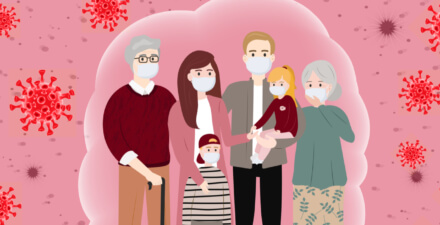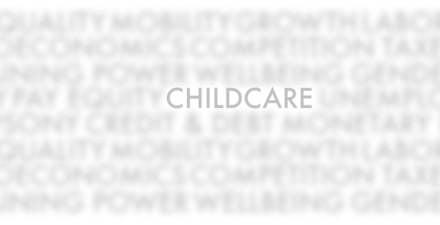What we know and what we need to know to improve health and economic well-being in the United States
Overview
Until recently, the policy debate over paid leave in the United States has most often focused on the need to expand access to paid parental and family caregiving benefits. Access to these benefits is lower in the United States than many other developed countries, and as women’s participation in the U.S. labor force grows, so too does the need for benefits to help workers juggle the competing demands of work and caregiving. Meanwhile, paid time off to address one’s own medical condition is the most frequently used type of paid leave, yet interestingly, has received far less attention in the policy debate and research.
The recent outbreak of COVID-19, the name of the disease spread by the new coronavirus, and the recession caused by policymakers’ failure to respond in a timely way to a growing public health crisis, has sensitized the country to the need for paid leave, especially paid sick leave. In response, Congress passed legislation that would provide some workers with temporary paid sick leave and caregiving leave.
Prior to the coronavirus pandemic, the lack of attention paid to medical leave was partly because more workers in the United States have access to it than the other types of leave. Approximately 42 percent of all U.S. private-sector employees had access to paid medical leave in the form of private short-term disability insurance in 2019, and 71 percent of workers had access to paid sick leave. Most workers who have access to short-term disability insurance have access through voluntary employer-provided plans. In addition, workers in six states now have access to paid medical leave through state-based programs, with three more plus the District of Columbia scheduled to begin paying benefits over the next 3 years.
California, New Jersey, New York, and Rhode Island operate the oldest paid medical leave programs, known as temporary disability insurance programs. These programs offer benefits ranging from 26 weeks to 52 weeks. More recently enacted state medical leave programs are generally shorter in duration, offering benefits from 2 weeks in the District of Columbia to 20 weeks in Massachusetts (scheduled to begin in 2021). In addition, many state and local governments have enacted mandates on employers to provide paid sick leave.
Still, access to these benefits is uneven and substantial unmet need exists, particularly for the country’s most vulnerable workers. Overall, access to paid medical leave through short-term disability insurance is higher among workers with higher incomes (63 percent in the top quartile), those working full time (51 percent), and in management, professional, and related occupations (58 percent). Gender and racial disparities also exist. In addition, according to the American Time Use Survey, a nationally representative survey of individuals, approximately 8.7 percent of workers reported not being able to take the leave that they needed (whether paid or unpaid) and that of this group, the most common reason for needing to take leave was to address their own medical condition (35.8 percent).
As policy interest in expanding paid leave to address workers’ needs is growing, so too is interest in research to better understand paid medical leave and its potential impact on economic and health outcomes, its implications for employers, and paid leave’s interactions with other government programs and costs. To date, not much research has been done in the United States to directly assess the impact of paid medical leave on key outcomes. There is relatively more evidence from Europe and other developed countries, particularly around paid sick leave, that suggests paid medical leave is a worthwhile investment.
This research from other countries is important, but key social, economic, and programmatic differences make it difficult to translate those findings into specific recommendations for U.S. policy. Yet research in areas related to paid medical leave that looks at the intersection of health, disability, income security, and work provide important insights for understanding the impact of paid medical leave policies.
In this report, we aim to inform future research by first providing background on what paid medical leave is and highlighting important features that make it distinct from parental and family caregiving. We then describe what is known about the expected impact of paid medical leave and the ways in which it could be expected to affect economic and health outcomes, including effects on individuals, public health, employers, and the U.S. economy. We then describe key remaining questions and data sources that could be used for future inquiry.
The coronavirus pandemic and new policies enacted at the federal, state, and local level in response to this public health crisis and subsequent recession also are opening up new lines of inquiry. Workers are taking both short-term sick leave and longer medical leave because of the coronavirus. A better understanding of the overall research on sick and medical leave can help inform how we respond to this immediate crisis, as well as to future crises and the overall future health and well-being of workers and their families in the U.S. economy.
Key Takeaways
- Paid medical leave is a benefit that allows individuals to take time off from work with pay to address their own serious medical conditions that limits their ability to work. The term “medical leave” is generally used to refer to leave that lasts weeks or months. Leave may be taken all at once, intermittently, or both.
- For low-income workers, taking weeks of leave to address health conditions without wage replacements would be very difficult or even financially catastrophic. Yet, they have less access to paid medical leave than their higher-earning counterparts.
- Workers in 6 states now have access to paid medical leave through state-based programs, with 3 more plus the District of Columbia scheduled to begin paying benefits over the next 3 years.
- Paid time off to address one’s own medical condition is the most frequently used type of paid leave. Yet interestingly, it has received far less attention in the policy debate and research, though that may be changing in response to the recent coronavirus pandemic and resulting economic downturn.
- Related research suggests that paid medical leave could affect economic outcomes by reducing income volatility, helping workers to return to employment after taking leave, reducing productivity loses due to presenteeism, and supporting greater labor supply and long-term labor force participation.
- Evidence to date suggests there are several different mechanisms through which paid medical leave may have an effect on health outcomes. These include improved health management, earlier treatment, greater healthcare utilization, improved income stability, reduced financial stress, and enhanced return-to-work supports.
- Research on short-term paid sick leave shows clear societal and personal benefits to paid sick leave and can help inform research on longer term medical leave policy.
- A paid medical leave program also creates an opportunity to provide return-to-work services for newly ill and injured workers who are struggling. Overall, the literature suggests that the most effective programs emphasize early intervention following the onset of a new condition or worsening of a chronic condition.
- To fill the gaps in our understanding of paid medical leave, future research should investigate:
o How workers use paid and unpaid medical leave
o How access to paid medical leave affects health outcomes
o Interactions between sick leave and medical leave policies
o How to most effectively provide return-to-work services
o How medical leave benefits vary across public and private plans
o How to evaluate alternative paid leave programmatic designs
o How outcomes may vary by sociodemographic characteristics
Related
Explore the Equitable Growth network of experts around the country and get answers to today's most pressing questions!







